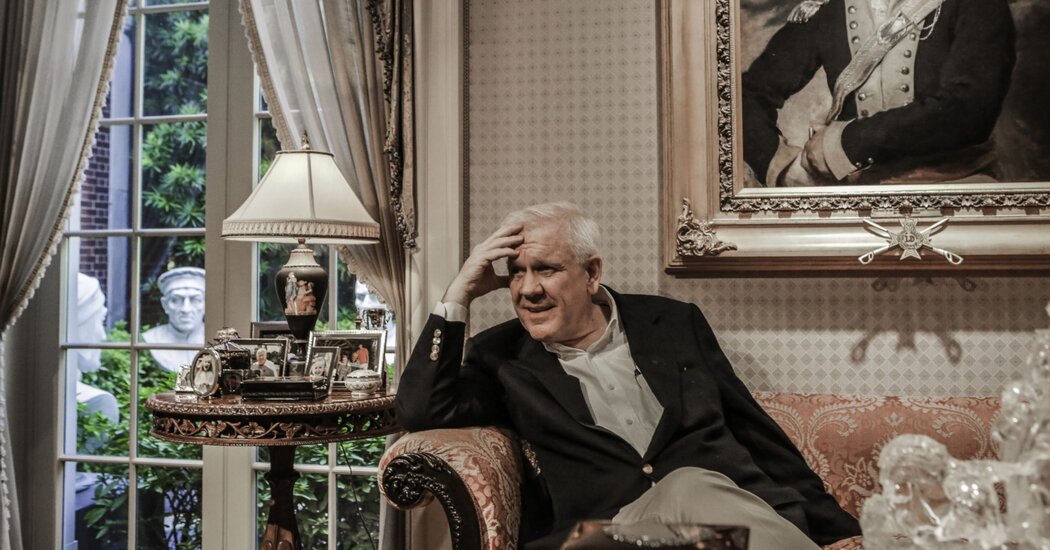In 2003, a reporter for D Magazine described the sculpture garden:
It is a collection of history’s felons. Felix Dzerzhinsky, the first commissar of the Soviet secret police, looks smug. Fidel Castro seems crestfallen, Joseph Stalin resolute. The bust of Nicolae Ceausescu captures him in his youthfulness, the towering Lenin at his most powerful.
In 2014, a reporter for The Dallas Morning News toured the garden, calling it a “historical nod to the facts of man’s inhumanity to man.”
“If these statues can be utilized as a tool to remind newer generations of the failure of the bad guys and the triumph of the good guys,” Crow said at the time, “then it’s a lesson worth having.”
Crow keeps an even larger number of historical items inside. They include a painting of George Washington by Rembrandt Peale, a document signed by Christopher Columbus and a collection of Nazi artifacts and Hitler memorabilia. Visitors attest to seeing a signed copy of “Mein Kampf,” two paintings by Hitler himself, Hitler stamps, Nazi medallions and linen napkins embroidered with the iconography of the Third Reich.
It is, to most people, jarring to see Nazi paraphernalia in the wild (versus, for example, in a World War II museum). And it is alarming to learn that one such collector of Nazi paraphernalia is a close friend of a Supreme Court justice and has strong ties to conservative media and the conservative movement. It is thanks to those ties, in fact, that Crow saw no shortage of defenders when news of his collection broke to the wider world.
“Harlan Crow is a deeply honorable, decent, and patriotic person,” said Jonah Goldberg, editor in chief of The Dispatch, on Twitter. Defending Crow’s “garden of evil,” Goldberg said that it’s “not a tribute to evil or something to be mocked. It’s an attempt” to “commemorate the horrors of the 20th century in the spirit of ‘never again.’” Crow, The Dispatch noted, is a minority investor in the publication.
















Leave a Reply